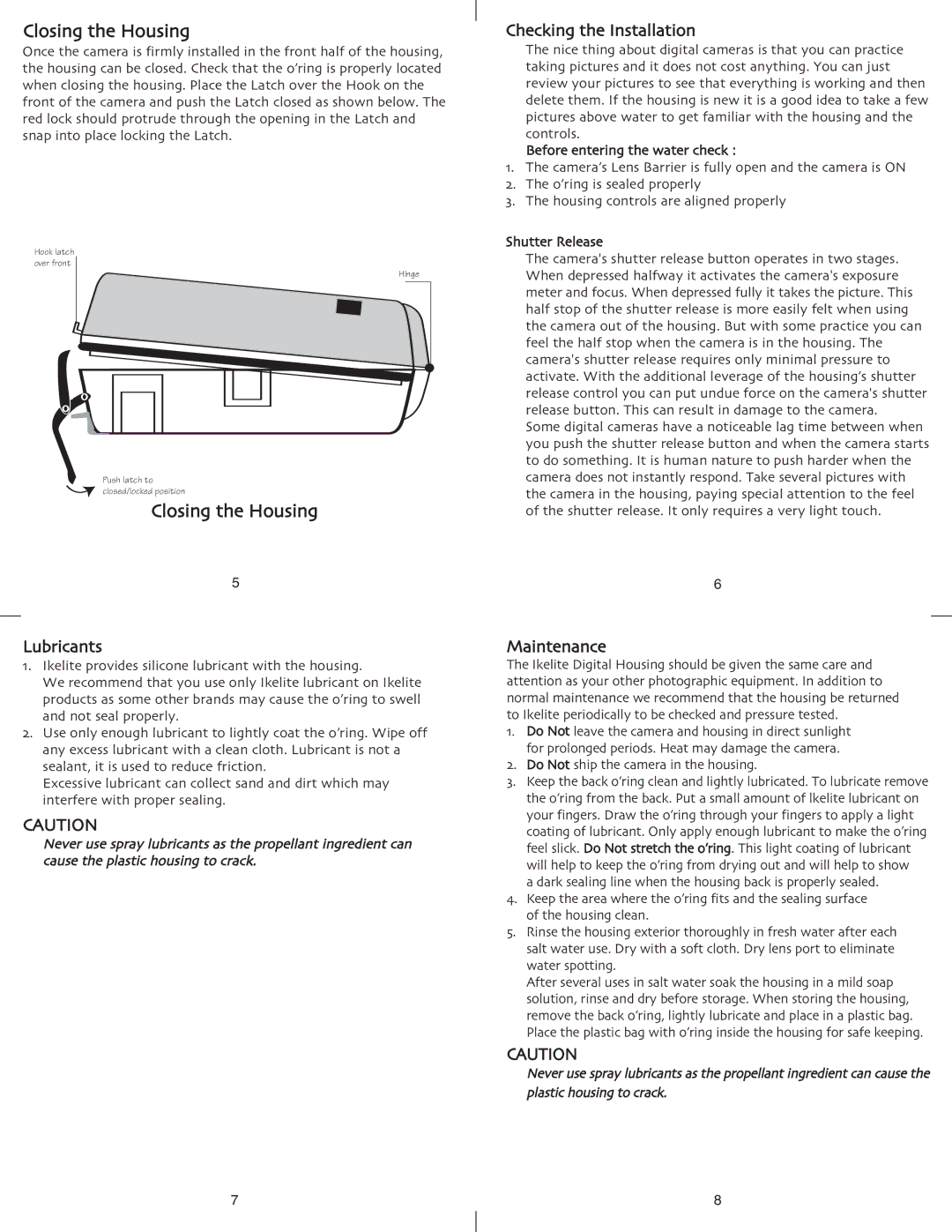D-230 specifications
The Ikelite D-230 is a renowned underwater strobe designed for photographers seeking to capture vibrant colors and details in marine environments. Known for its exceptional build quality and user-friendly features, the D-230 is a favorite among both amateur and professional underwater photographers.One of the key features of the D-230 is its impressive guide number of 210, which provides ample power for illuminating subjects even in challenging lighting conditions. This high guide number ensures that the strobe can effectively light subjects at various depths, allowing photographers to achieve stunning results, whether they're exploring shallow reefs or deeper waters.
The D-230 operates with a versatile TTL (Through The Lens) exposure control, offering automatic flash exposure for optimal lighting in a range of scenarios. This technology allows for consistent results without the need for manual adjustments, making it easier for users to focus on composition rather than technical settings. Additionally, the strobe has a manual mode, enabling experienced photographers to fine-tune their lighting to match specific shooting conditions.
Durability is a hallmark of the Ikelite brand, and the D-230 exemplifies this with its robust construction. The strobe is built with a corrosion-resistant materials, ensuring longevity even in harsh saltwater environments. It features a heavy-duty housing that is both waterproof and shock-resistant, providing reliability during demanding underwater adventures.
The D-230 also incorporates a unique diffusion dome, which helps to soften and spread the light more evenly, reducing harsh shadows and achieving a natural look in photographs. This design makes it especially useful for broader lighting coverage, enhancing the overall quality of images taken in the underwater realm.
In terms of usability, the D-230 features clearly marked controls, making it intuitive for photographers to operate, even with gloves on. The strobe’s rechargeable battery system adds convenience, allowing for extended shooting sessions without the need for constant battery replacements.
Furthermore, the D-230 is compatible with a variety of Ikelite’s underwater housings and can be easily integrated into existing setups, making it a versatile choice for photographers looking to enhance their underwater photography gear.
In conclusion, the Ikelite D-230 strobe stands out for its powerful performance, construction durability, and ease of use. Whether you're capturing the vibrant colors of coral reefs or the subtle details of marine life, the D-230 is a tool that empowers photographers to create stunning and memorable underwater images. With its impressive features and reliable performance, the D-230 continues to be a go-to option for underwater photography enthusiasts globally.

